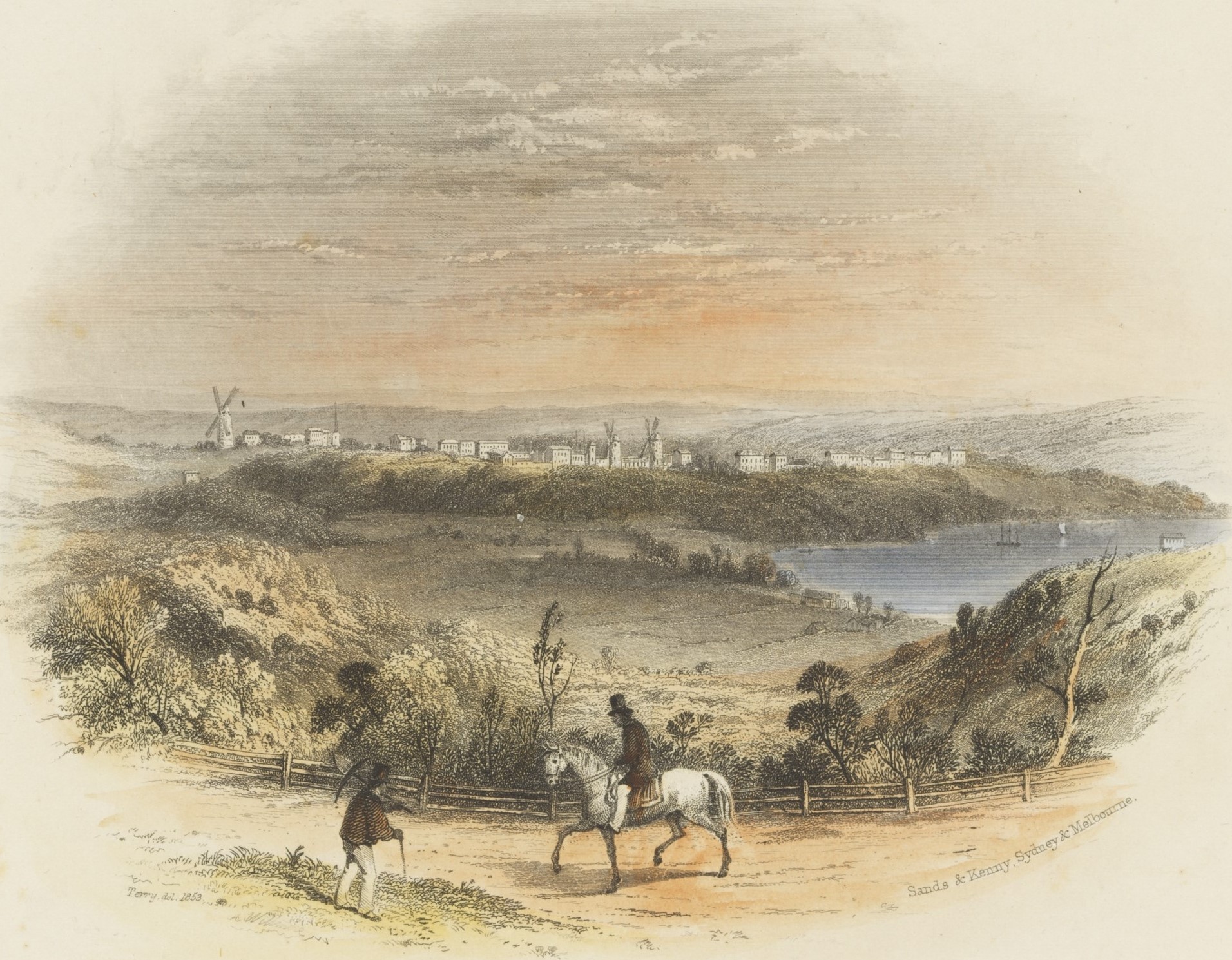
'Sydney from the Old Point Piper Road', 1853
By Frederick Terry in Sydney Illustrated, 56, State Library of NSW, F981.1/P

View of Sydney from 'Hilton' villa, Darlinghurst showing animals grazing and Hyde Park in the distance, after 1851
Watercolour by John Rae, State Library of NSW, DG SV1A/15
The name Darlinghurst was used to describe not just today’s Darlinghurst, but parts of Kings Cross, Potts Point and Elizabeth Bay for much of the 19th century. As historian, Mark Dunn, notes, topography formed an important part of the development of the suburb, as wealthy individuals constructed their villas on the higher ridge while the housing in the valley toward Woolloomooloo Bay was reserved for the lower classes.1
Windmills began appearing on the heights of Darlinghurst from about 1819, and were preceded only by Thomas West’s water mill nearby in ‘Barcom Glen’. Thomas Clarkson’s stone mill and two smaller wooden post mills were situated close to Liverpool and Darley streets from about 1819, and Thomas Hyndes’ stone mill was near Craigend mansion, around today’s Royston Street. A Mr Alexander Harris, who sailed into Sydney during the 1820s, wrote that on a ‘breezy day’ you could hear the ‘merry rattling’ of the windmills.2
Until about the 1850s Liverpool Street remained predominantly vacant lands characterised by a handful of buildings, mostly single-storey cottages, toward the Hyde Park end of the street, and paddocks for grazing livestock. In 1851 one of the earliest residents of the street, the town clerk, John Rae, constructed his three-storey, brick mansion, ‘Hilton’, which today houses Robin Gibson Gallery.
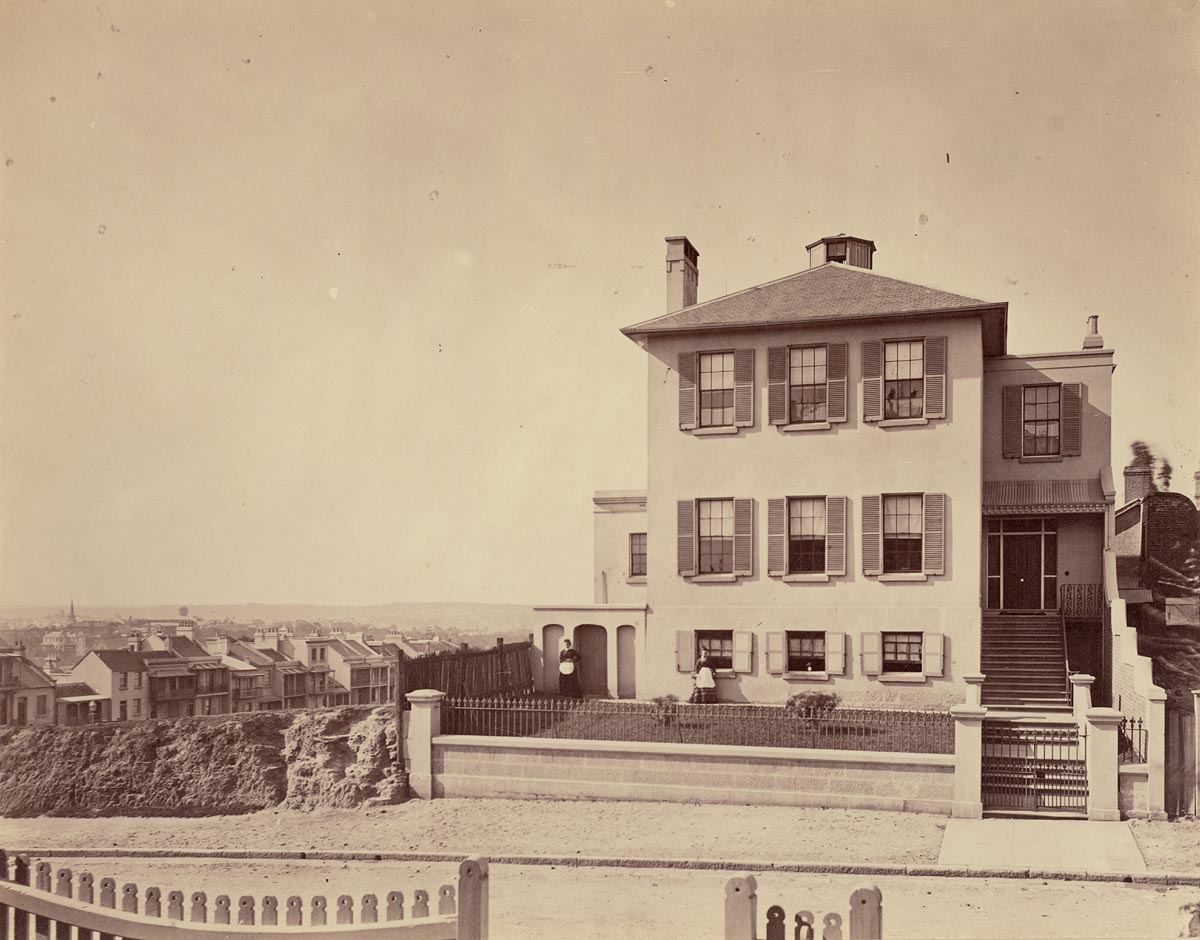
'Hilton' villa, c1879-82
Photograph of Hilton villa at 278 Liverpool Street, Darlinghurst, residence of John Rae and family, State Library of NSW, SPF/403
From the late 1850s Rae’s mansion, in its elevated position set within a generous acreage, was the exception to the rule in an area which began to transform from a low-rise village of freestanding dwellings, to a higher density, inner city district. It became somewhat of a local landmark, used in real estate advertisements to promote new developments in the area.
One ‘capital dwelling house’, occupied by Reverend J C Mackinson on the corner of Liverpool and Darley streets, was described as ’near the residences of F Mitchell, Esq and John Rae’ and with the ‘view over the harbour and shipping most delightful’3:
The House contains 5 excellent rooms, divided by passage, also servant’s room, and verandah in front and rear, together with the usual out-offices [outbuildings]. It is well finished, the roof being spouted all around, conducting the rain water into a large tank…affording at all times a good supply of water.
The kitchen is fitted with a Gravely’s stove. This house is beautifully situated on an elevated and airy position; it is well adapted for the residence of a respectable family, being in a capital neighbourhood, and only a short distance from the busy parts of the metropolis.4
On top of his slate roof Rae constructed an octagonal observatory-like structure, which offered panoramic views of the city and surrounds. He produced illustrations and photographs of the city (Views in old Sydney, 1842) both from his attic and on the ground, showing Hyde Park, ‘busy Oxford-street as cattle-paddocks…Woolloomooloo as a rural scene of windmills’ and north ‘Macquarie-street as having only two houses and the public library.’
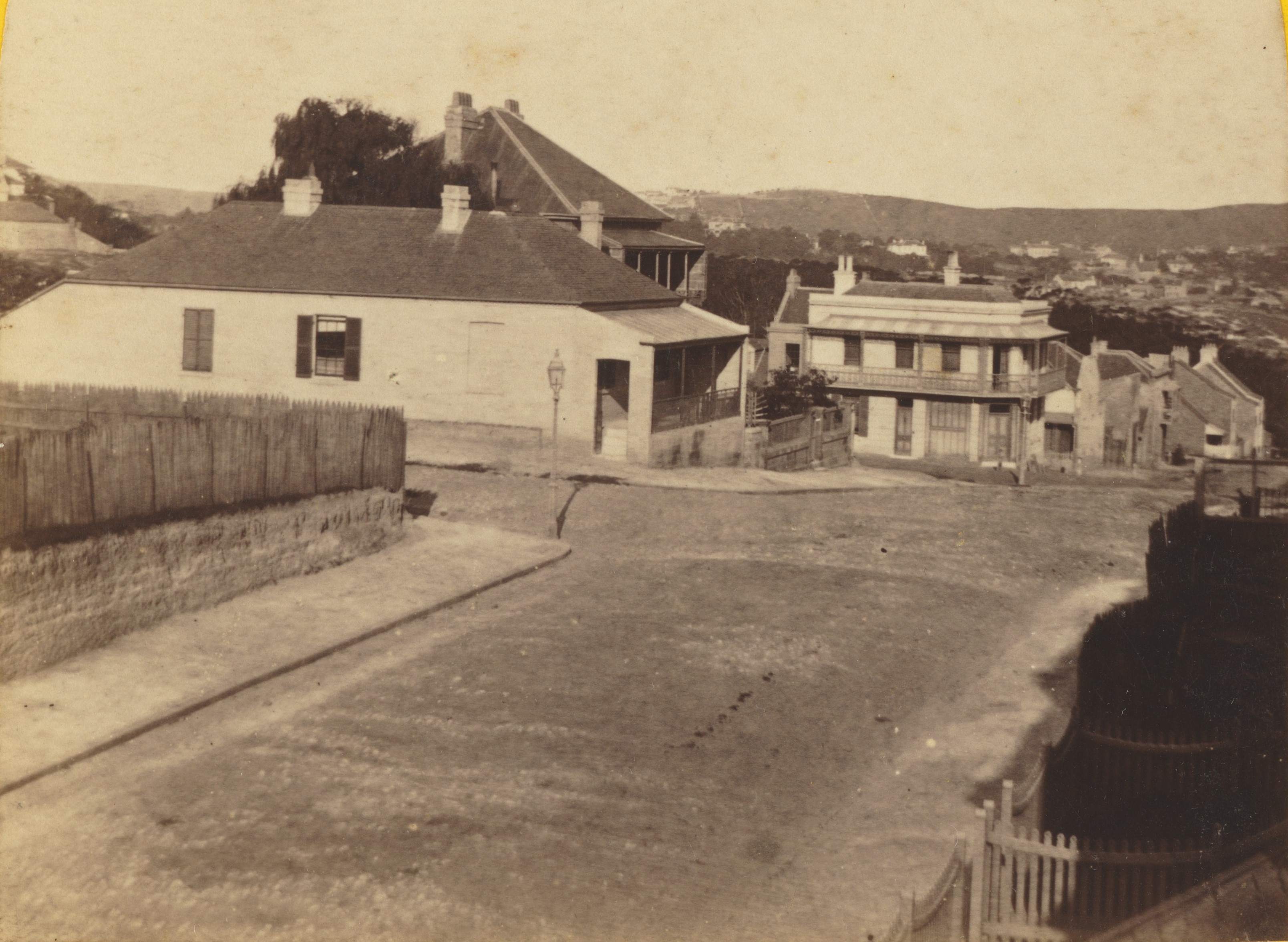
'From Upper Liverpool Street looking east', showing the corner of Darley Street, 1865-69
The single-storey cottage was first occupied by Reverend J C Mackinson in the early 1850s and is now the site of ‘Novar’ (298 Liverpool Street), which was constructed in 1880. The neighbouring house is ‘The Grange’ which still stands at 300 Liverpool Street. Stereograph by Sir Hugh Dixson, State Library of NSW, DL PX 132/19
Rae’s Darlinghurst and Woolloomooloo Bay of 1842 appears to be what another observer termed, a ‘pretty hamlet’, removed from the busy port town. Rae penned his description of a colonial town on the cusp of change in the early 1840s, and his street views capture a critical moment in the development of Liverpool Street and the city more broadly. He concludes:
…we have no stir of commerce; no large vessels riding at anchor; no wharves or stores, with all their noise and bustle, to disturb the quiet serenity that reigns around. All is summer, and sunshine, and tranquil repose….The sunbeams glitter on the same peaceful waters, and the trees which overhang their borders throw the same shadow across them, as they did half a century ago, when the first English prow glided into the harbour….5
Yet Rae’s romantic description obscures a different reality; one of a burgeoning population and city. Rae’s quiet village of ‘undulating and extended lawns’, ’neat fences’, and cottage dwellings presents a stark contrast to a sprawling Victorian metropolis. It is one alluded to in Rae’s writing, when he characterises buildings in The Rocks and on George Street as the ‘remains of the olden time, standing in a manner between the living and the dead’:
…between the past and the present…between the weather-boarded huts, gradually disappearing, and the stately structures of polished freestone, that are rapidly rising in every part of the town….The new buildings, however, are creeping into the places of the old, and altering the features of the town so materially, that, in another generation, we may look in vain for a relic of the class of houses that prevailed in the good old times, when people were allowed to build according to caprice of their fancy.6
Rae’s sweeping, uninterrupted views from his own stately structure, ‘Hilton’ on Liverpool Street, were not to last, and soon the paddocks and grazing cattle began to disappear. From this a different picture of Darlinghurst emerged…
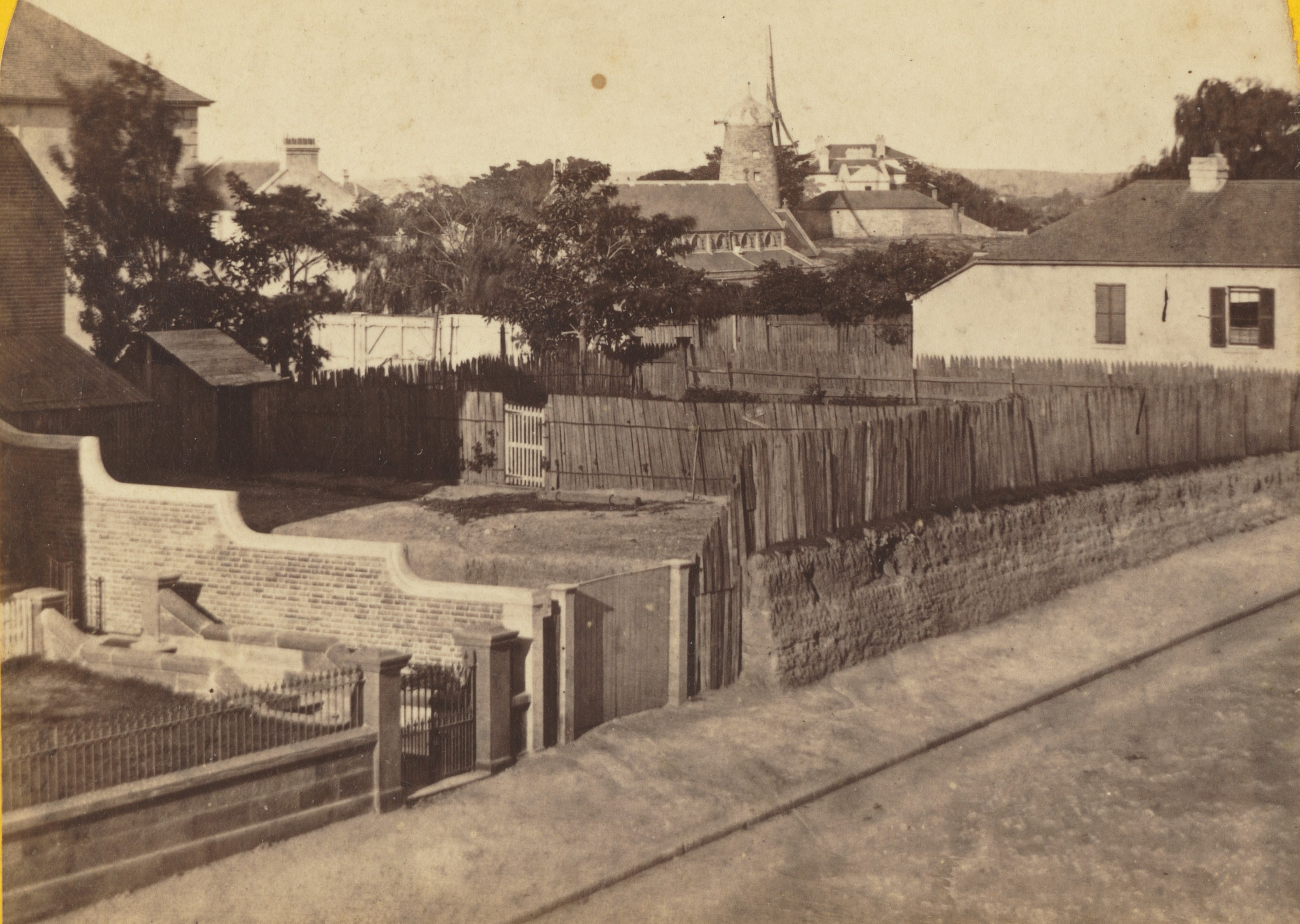
'Windmill Hill from Upper Liverpool Street', 1865-69
Photographed near the residence of John Rae, ‘Hilton’, stereograph by Sir Hugh Dixson, State Library of NSW, DL PX 132/17

'View from Upper Liverpool Street East', 1865-69
Showing prime real estate neighbouring John Rae’s ‘Hilton’ mansion with cattle grazing, stereograph by Sir Hugh Dixson, State Library of NSW, [DL PX 132/18]
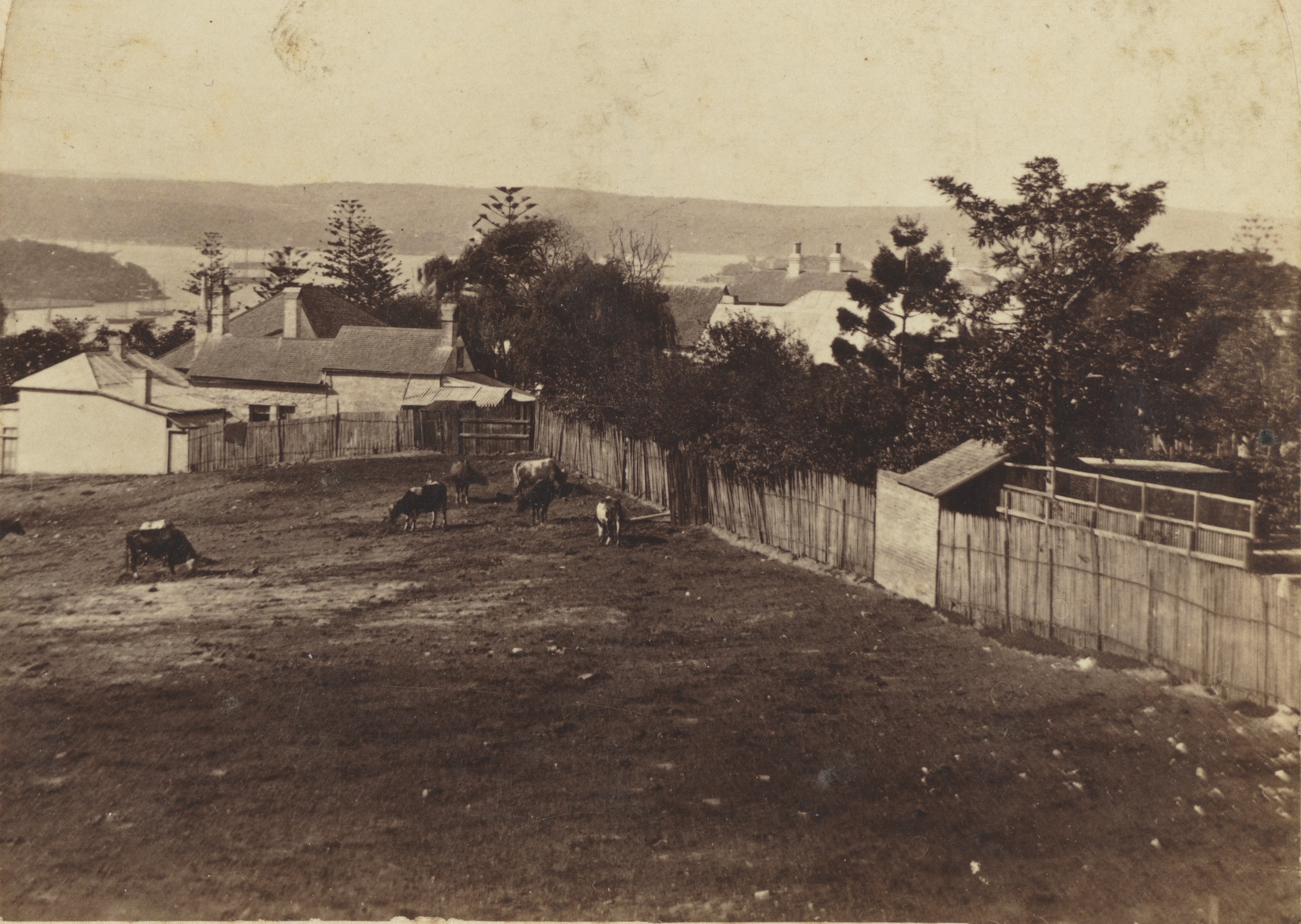
'View of Sydney Harbour from Liverpool Street east', 1865-69
Stereograph by Sir Hugh Dixson, State Library of NSW, [DL PX 132/20]
Read the next part of the story.
Mark Dunn, Darlinghurst, Dictionary of Sydney, 2011, http://dictionaryofsydney.org/entry/darlinghurst. ↩︎
Alexander Harris, Settlers and Convicts; or Recollections of Sixteen Years Hard Labour in the Australian Backwoods, 1847 via Project Gutenberg and Catie Gilchrist, Windmills of Sydney, Dictionary of Sydney, 2016, http://dictionaryofsydney.org/entry/windmills_of_sydney. ↩︎
Laila Ellmoos, ‘Building Darlinghurst’ in Anna Clark, Gabrielle Kemmis and Tamson Pietsch, eds., My Darlinghurst (Sydney, NSW: NewSouth Publishing, 2023), 28, ‘Advertising’, Sydney Morning Herald, 10 August 1853, 1, http://nla.gov.au/nla.news-article12947910 and ‘Advertising’, Empire, 11 April 1853, 4, http://nla.gov.au/nla.news-article61323240. ↩︎
‘Advertising’, Sydney Morning Herald, 14 December 1853, 93, http://nla.gov.au/nla.news-article30939435. ↩︎
John Rae, ‘Woolloomooloo Bay’, 1842, in John Skinner Prout, Sydney Illustrated (Sydney, NSW, 1843), 7 and 185, State Library of NSW, F981.1/P, https://collection.sl.nsw.gov.au/record/74VvXkDw2gEb/B5jBpgp7MEO40. ↩︎
John Rae, Sydney Illustrated, March 1844, 37. ↩︎

